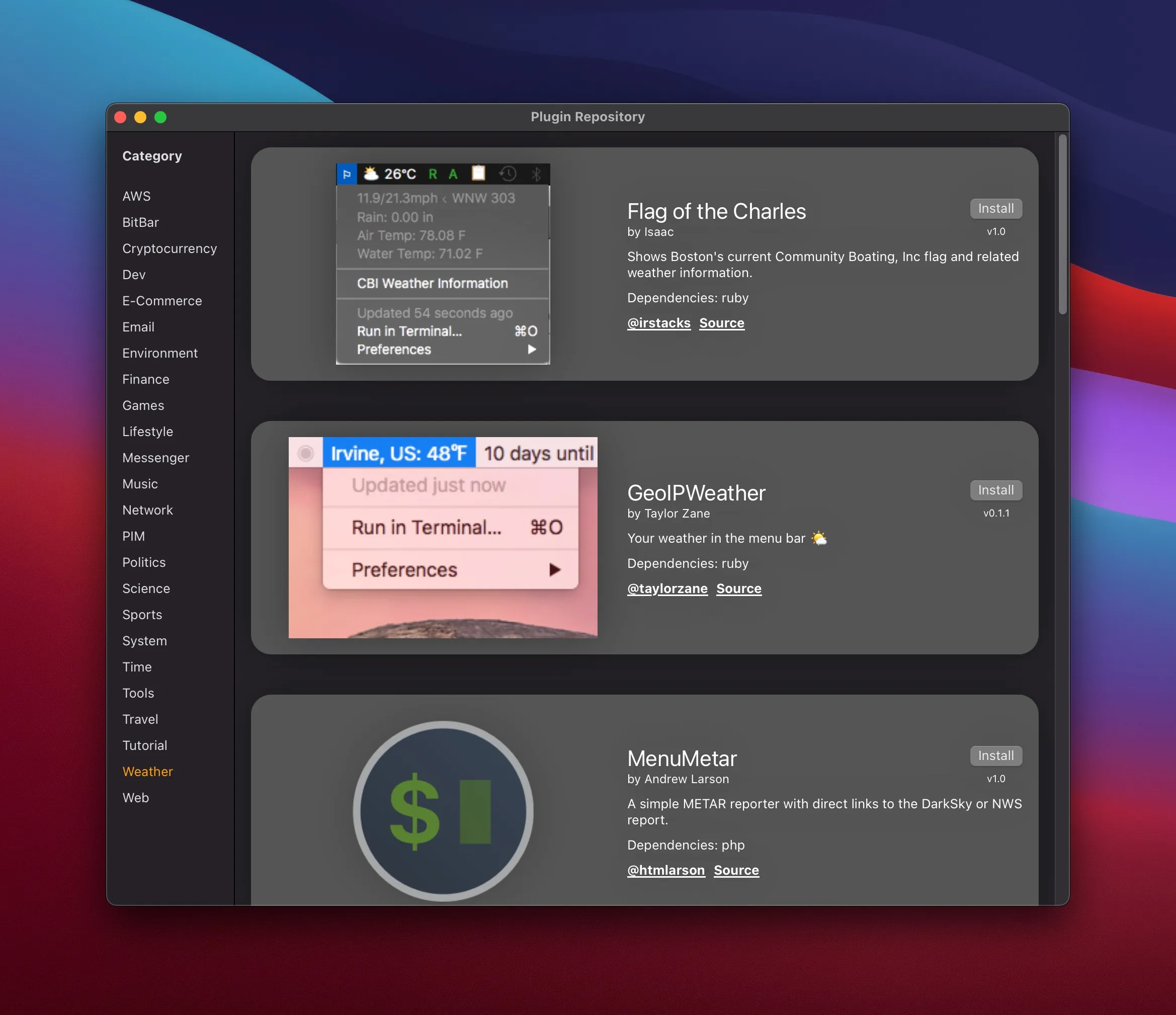I recently discovered SwiftBar while looking for a way to display custom system information in my Mac’s menu bar without relying on proprietary solutions. As someone who appreciates open-source alternatives to commercial apps, I was immediately drawn to this MIT-licensed project that promises to “put anything in your menu bar” using simple shell scripts.
SwiftBar transforms your Mac’s menu bar into a customizable dashboard through a surprisingly elegant approach: write a script, drop it into SwiftBar’s plugin folder, and watch it come to life. I’ve been testing this on my M2 MacBook Air running macOS 15.4, and the simplicity is genuinely refreshing. Unlike complex menu bar managers that require extensive configuration, SwiftBar operates on the principle that if you can script it, you can display it.
The app supports plugins written in any programming language - shell scripts, Python, Node.js, Ruby, or even compiled binaries. I started with a simple bash script to monitor my system’s CPU temperature, and within minutes had live data updating in my menu bar. The plugin API offers rich formatting options including colors, fonts, images, and even dropdown menus, making it possible to create sophisticated interfaces that rival purpose-built applications.
What sets SwiftBar apart is its active plugin ecosystem. The community has contributed hundreds of plugins covering everything from cryptocurrency prices and weather updates to GitHub notifications and Docker container status. I particularly appreciate the BitBar compatibility, which means years of community-developed plugins work seamlessly. The plugin repository screenshot in the app showcases this impressive variety, though I found myself writing custom scripts for my specific monitoring needs.
The system requirements are minimal - macOS Catalina (10.15) or newer - and performance impact is negligible. On my machine, SwiftBar typically uses less than 50MB of memory and virtually no CPU when idle. Plugins can be configured with custom refresh intervals, from every second to once daily, giving you precise control over system resource usage.
Installation is straightforward with multiple options: download from GitHub releases, install via Homebrew (brew install swiftbar), or build from source using Xcode. The app includes both standard plugins that run continuously and ephemeral plugins that execute only when clicked, accommodating different use cases efficiently.
I do encounter occasional limitations with the interface. The plugin management could be more intuitive for non-technical users, and debugging failed scripts requires some command-line comfort. The app doesn’t include a built-in plugin editor, so you’ll need your preferred text editor. However, these are minor considerations for an open-source tool that delivers remarkable flexibility.
SwiftBar excels at solving the common problem of wanting specific system information readily accessible without cluttering your desktop with widgets or constantly opening Activity Monitor. For developers and system administrators who already work with scripts, it’s an obvious choice. Even Mac users who aren’t programmers can benefit from the extensive plugin library, though some technical familiarity helps with customization.
The latest version 2.0.1 added several developer-friendly features including environment variables for plugin refresh reasons, support for the Ghostty terminal, and the ability to detach web view popovers as floating windows. These improvements show active development and community responsiveness.
SwiftBar is completely free and represents the best of open-source software: solving real problems with elegant simplicity while fostering community collaboration. If you’ve ever wanted custom menu bar functionality without vendor lock-in or subscription fees, this is your solution.
